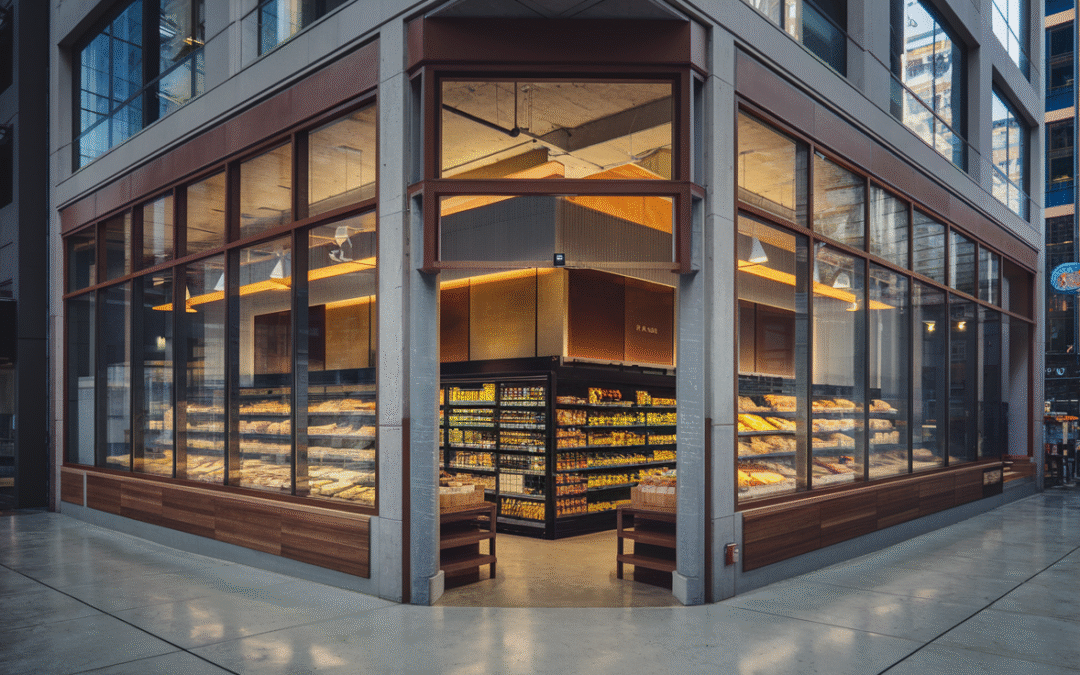Adapting Grocery Store Designs for Small Urban Footprints: A Guide for San Francisco Property Developers
As the metropolitan landscape continues to evolve, urban grocery store design must meet the challenges presented by limited space and increasing consumer demands. Understanding small footprint grocery store design is essential for property developers and investors eager to capitalize on this opportunity. At iBuild Design and Construction, we specialize in crafting efficient and visually engaging grocery environments that make the most out of compact urban spaces.
Table of Contents
- Understanding Small Footprint Grocery Stores
- The Challenges of Designing in Small Spaces
- Essential Elements of Small Footprint Design
- How iBuild Leverages Its Architect-Led Model
- Enhancing Customer Experience with Design
- Case Studies: Real World Successes
- Conclusion
- Get Started with iBuild
Understanding Small Footprint Grocery Stores
Small footprint grocery stores are a response to the spatial limitations of urban settings like San Francisco. They aim to deliver full-scale supermarket offerings in smaller, strategically designed environments. Embracing compact design requires intelligent planning and execution to remain functional and consumer-friendly.
The Urban Demand
Urban areas continue to proliferate, and as a result, the demand for convenient, accessible grocery solutions rises. By capitalizing on dense locales with innovative design, grocery stores can meet the needs of busy city dwellers without compromising on quality or variety.
Efficient Use of Space
Maximizing vertical space, utilizing modular shelving, and incorporating versatile layouts are all strategies employed in small footprint grocery store design. These techniques ensure that every square foot is optimally utilized to enhance both convenience and aesthetics.
The Challenges of Designing in Small Spaces
Designing grocery stores within compact urban spaces presents numerous logistical and architectural challenges. However, innovative practices and technology can transform potential obstacles into opportunities.
Logistical Considerations
One significant hurdle includes logistics, such as integrating efficient supply stocking processes and maintaining ease of navigation for customers. Thoughtful planning is needed to mitigate these concerns effectively.
Meeting Local Regulations
Permitting processes and adherence to local zoning regulations are vital components. Engaging with an experienced team that understands the Bay Area’s intricate requirements speeds up approvals, saving time and resources. The service offerings of iBuild Design and Construction ensure seamless permitting navigation.
Essential Elements of Small Footprint Design
Incorporating essential design elements is crucial for small footprint grocery stores to succeed in an urban setting.
Interactive Layouts
Creating fluid, interactive layouts allows for better customer flow and enhanced shopping experiences. Innovative shelving and display solutions contribute to this end, promoting accessibility and ease of movement.
Advanced Technological Integration
The use of technology in store design and operation can significantly enhance space usage. For example, self-checkout stations and digital signage can optimize customer service while preserving floor space.
Aesthetic Considerations
Aesthetics play a crucial role in attracting and retaining customers. Designing eye-catching interiors, employing strategic lighting, and using sustainable materials are pivotal in achieving a welcoming shopping environment.
How iBuild Leverages Its Architect-Led Model
By integrating architectural creativity with construction expertise, iBuild ensures successful small footprint design execution.
Feasibility and Budget Projections
iBuild begins projects with detailed feasibility studies and budget projections, giving clients insights into potential costs and timelines. This transparency aids decision-makers in forming educated investments in compact urban spaces.
Collaborative Execution
iBuild’s architect-led approach optimizes all project stages, from design to final execution. This model reduces coordination gaps and accelerates project delivery, maintaining high standards of quality and design integrity.
Enhancing Customer Experience with Design
Customer experience remains central to grocery store planning. Strategic design considers various factors to create engaging, satisfying shopping trips.
Service-Oriented Layouts
Prioritizing service-oriented layouts involves placing high-traffic items within easy reach and creating seamless paths for navigation. This consideration boosts overall accessibility and satisfies fast-paced urban consumers.
Incorporating Feedback
Utilizing customer feedback influences store modifications and informs successful design strategies. Gathering real-life insights enables ongoing advancements to maintain optimal efficiency and service quality.
Case Studies: Real World Successes
Imagine a local San Mateo grocery store facing tight spatial constraints. Collaborating with iBuild Design and Construction, the store transformed into an efficient, aesthetically pleasing space, boosting monthly foot traffic and increasing customer engagement. These types of successes highlight the profound impact of strategic design interventions tailored around small footprint grocery store design.
Conclusion
Navigating the intricacies of small footprint grocery store design requires a nuanced understanding of the interplay between space, technology, and consumer preferences. With iBuild Design and Construction, developers and investors have the advantage of pioneering architectural vision matched with experienced execution, ensuring impactful results within confined urban environments.
Get Started with iBuild
Are you ready to transform your urban commercial project with a premier design-build firm? Partner with iBuild Design and Construction today. Harness the expertise of a firm committed to successful, innovatively designed grocery environments. Let’s discuss how we can bring your vision to life.

